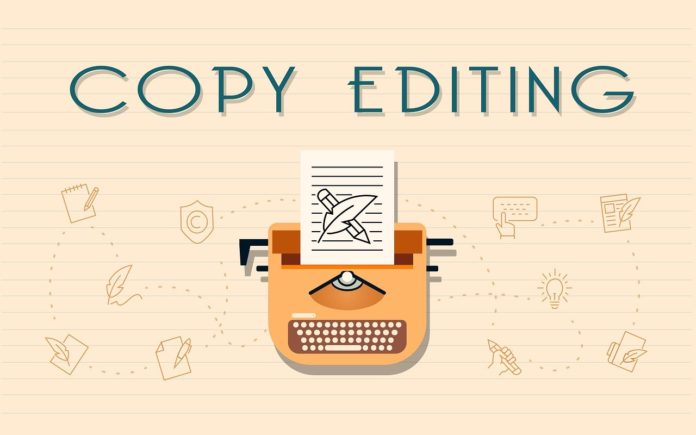Editing defined
A simple definition of editing is improving text of some kind, whether it’s going to be published for millions or for a college class. Editing services aim for copy to be well-written, high-quality, and error-free. Editing as a service is important for a range of copy types. Maybe it will appear online as a blog or article, in a journal or newspaper, as an announcement or poster, or as a full-length book.
There are several types of manuscript manipulation techniques that require understanding to fully grasp where editing falls within the publishing process. The related services we’ll cover are copyediting, substantive editing, and proofreading.
Copyediting
Copyeditors typically provide editing services on a line-by-line, or sentence-by-sentence, basis. This means they will make suggestions for sentence structure, flow, and word choice and will correct any errors they come across in grammar, spelling, or punctuation. They’ll check formatting and alignment with applicable style guides, such as the Chicago Manual of Style or the American Psychological Association (APA) style. These style guides are especially particular about the references and citation lists in academic or technical works.
Copyediting typically does not include providing suggestions about the style and consistency of the entire document, especially if it is a book-length work. Copyediting is more laser-focused on each sentence, word, and paragraph. Sometimes copyeditors communicate with authors, but often they do not.
Substantive editing
Substantive editing, also referred to as developmental editing, addresses the organization of ideas within a document, and dives deeper into meaning and tone for the intended audience than copyediting does. A substantive editor will pay attention to how ideas are organized, phrasing, and readability.
Developmental or substantive editors will also pay attention to consistency of tone, language, and word usage throughout the entire document. They may or may not be responsible for correcting grammatical or spelling errors, as their focus is on the complete presentation of the text.
Article Source: http://EzineArticles.com/10139271












